#Gutzon Borglum
Text

Taking care of some repairs on Mount Rushmore in 1962. Photo by Gutzon Borglum
67 notes
·
View notes
Text
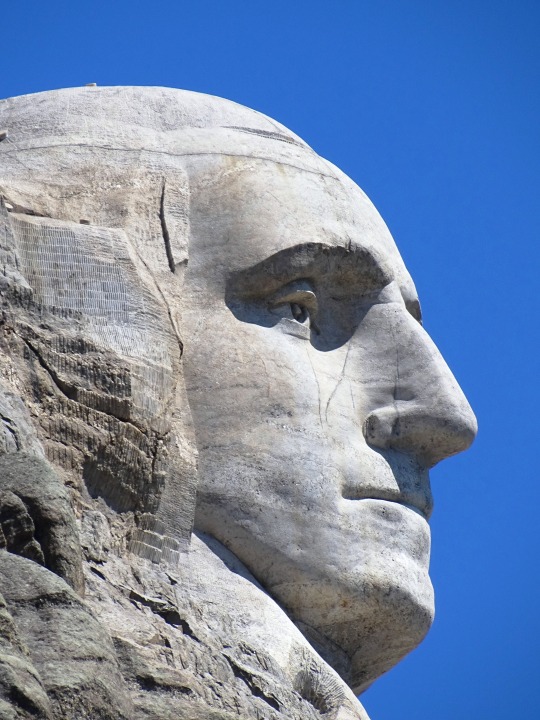

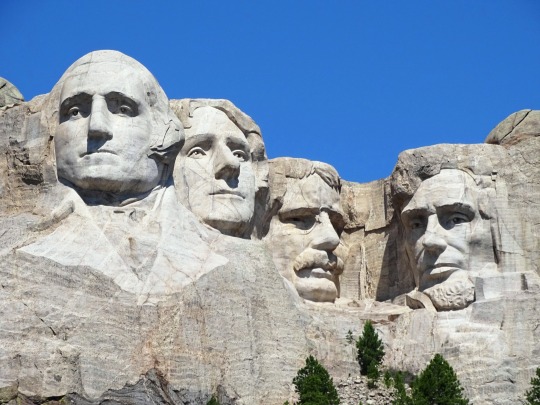

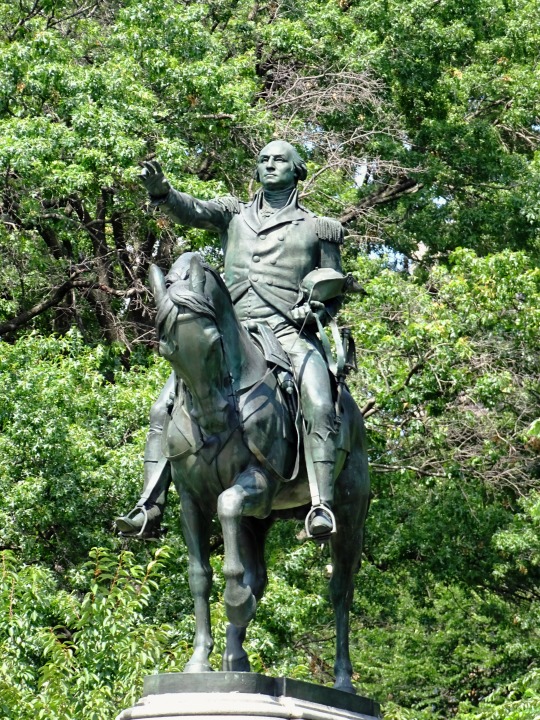

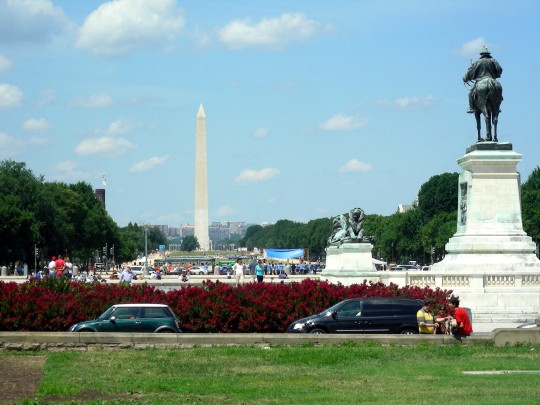


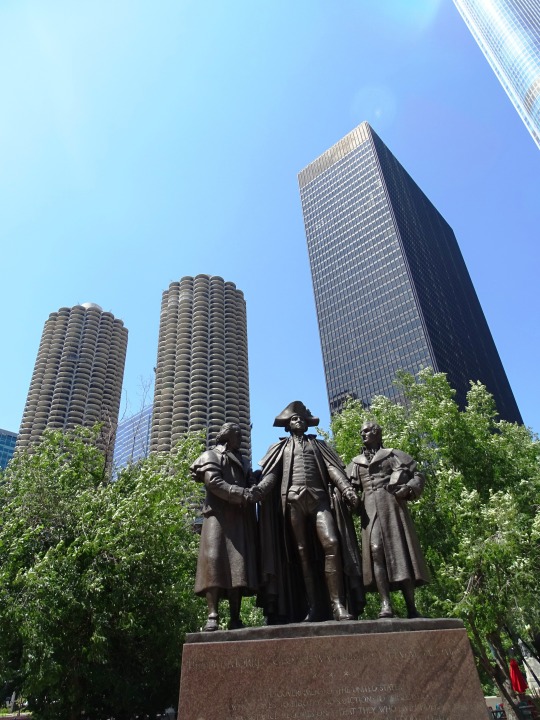
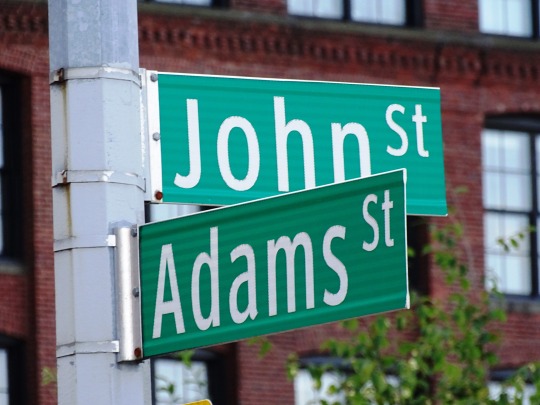
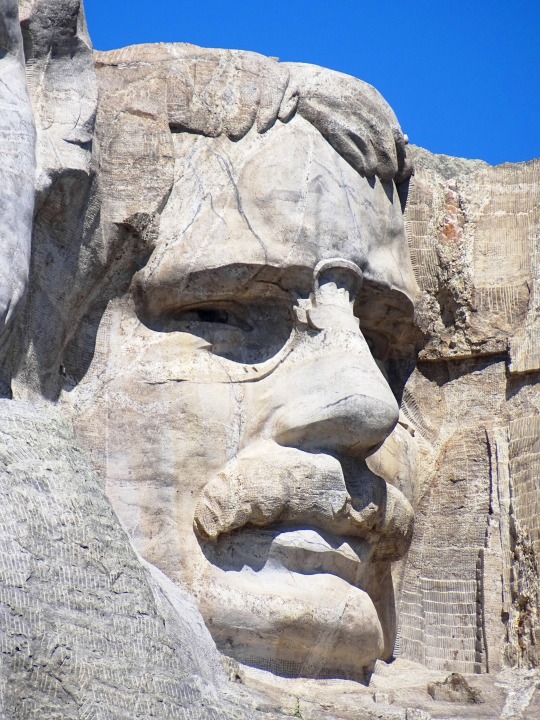

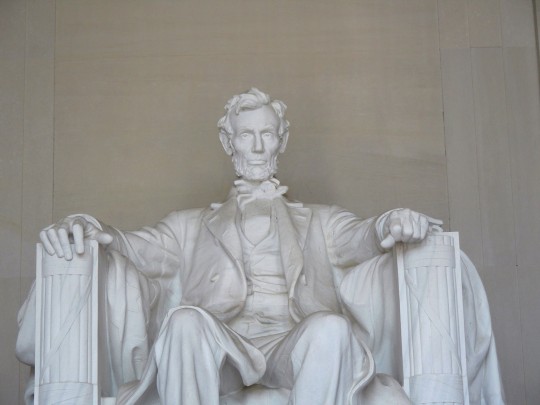
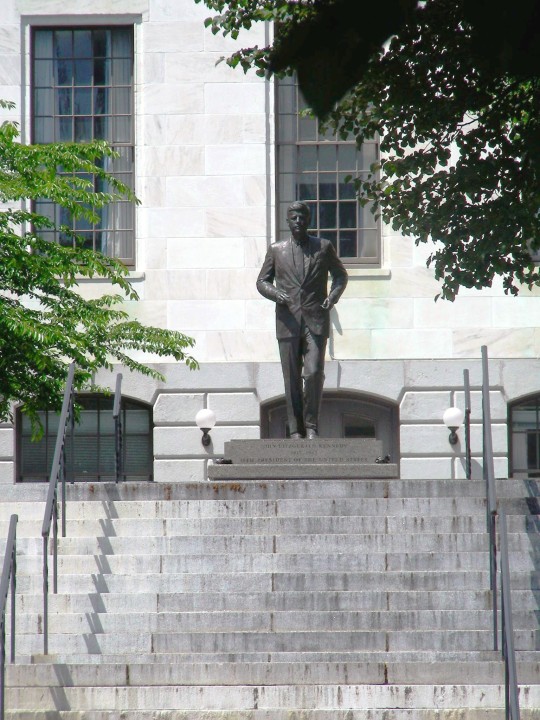
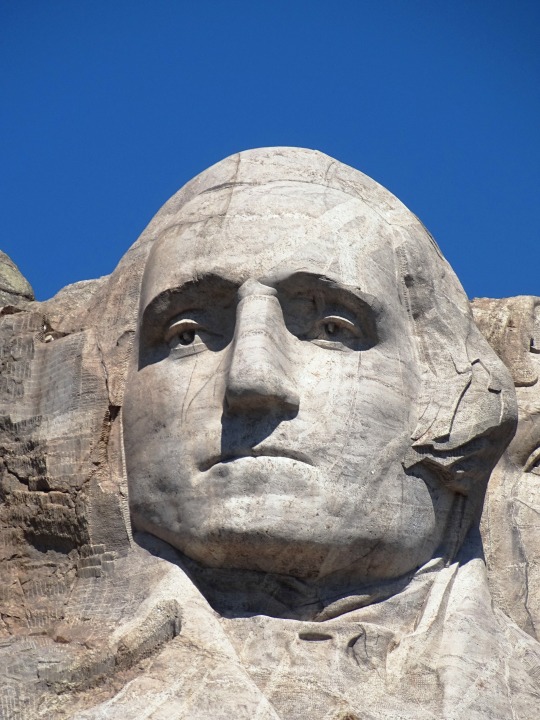

Presidents’ Day
Celebrated each year, on the third Monday in February, Presidents’ Day is a federal holiday to pay tribute to the presidents of the United States, including George Washington, the country’s first president, and Abraham Lincoln, who served during the Civil War. The holiday was originally established to honor Washington, but over time it has come to be a day to recognize all of the nation’s presidents. It is a day when many businesses and government offices are closed and people have the day off from work or school. Some people celebrate Presidents’ Day by participating in parades or other events, while others use it as a time to relax and spend time with family and friends.
History of Presidents’ Day
Presidents’ Day has its roots in the celebration of George Washington’s birthday, which has been observed as a national holiday in the United States since the late 18th century. Washington was born on February 22, 1732, and his birthday was first officially recognized as a national holiday by an act of Congress in 1879. The holiday was originally called “Washington’s Birthday,” and it was observed on February 22 each year.
In the 20th century, Congress passed the Uniform Monday Holiday Act, which was designed to create more three-day weekends for the nation’s workers by moving several holidays to Mondays. As part of this act, the holiday honoring Washington was moved to the third Monday in February and was renamed “Presidents’ Day” to recognize not just Washington, but all of the presidents of the United States. The holiday has been observed on the third Monday in February since 1971.
Presidents’ Day is not only a time to honor US presidents, but also a time to reflect on the important role that they have played in shaping the nation’s history.
How to Celebrate Presidents’ Day
There are many ways to celebrate Presidents’ Day. Some people choose to honor the holiday by taking part in parades or other events that are held in honor of the presidents. Others use the day as an opportunity to learn more about the presidents and their contributions to the country. Here are a few ideas for celebrating Presidents’ Day:
Attend a Parade, or Visit a Presidential Museum or Library
Many cities and towns hold parades on Presidents’ Day to celebrate the presidents of the USA. Look for one in your area and join in the celebration. There are also many museums and libraries dedicated to the presidents of the United States.
Read a Book About a President
There are many books available about US presidents. Consider reading one of these to learn more about a particular president or the history of the presidency:
Washington: A Life by Ron Chernow. This Pulitzer Prize-winning biography provides an honest portrait of George Washington, the man who became the United States’ first president.
Team of Rivals: The Political Genius of Abraham Lincoln by Doris Kearns Goodwin. This book chronicles the life and presidency of Abraham Lincoln, focusing on his ability to lead and manage a diverse group of advisors and cabinet members.
John F. Kennedy: A Biography by Michael O’Brien. A comprehensive biography of JFK, examining the life and legacy of the 35th president, from his childhood and education to his assassination in 1963.
The Reagan Diaries edited by Douglas Brinkley. A collection of diary entries written by President Ronald Reagan during his two terms in office, this book provides a unique, behind-the-scenes look at the Reagan presidency.
Barack Obama: The Story by David Maraniss. Offering a detailed and nuanced portrait of Barack Obama, the 44th president of the United States, it covers Obama’s early life, political career, and presidency, and offers insight into the man and his leadership style.
Watch a Movie or Documentary
There are many films and documentaries about US presidents, but here’s a few to get you started:
Lincoln (2012) – A biographical drama that stars Daniel Day-Lewis as Abraham Lincoln, the 16th president of the United States. It focuses on Lincoln’s role in the abolition of slavery and the passage of the 13th Amendment to the Constitution.
Truman (1995) – Starring Gary Sinise as the 33rd president of the United States, Harry S. Truman, the film covers Truman’s life, career, and presidency, including his role in the dropping of the atomic bombs on Japan and the Korean War.
JFK (1991) – A biographical drama starring Kevin Costner as President John F. Kennedy, this film examines the events leading up to Kennedy’s assassination and the investigations that followed.
Nixon (1995) – Stars Anthony Hopkins as President Richard Nixon. The film covers Nixon’s political career, the Watergate scandal and his eventual resignation from office.
The President (2019) – A documentary profiling President Barack Obama, covering his life, career, and presidency.
Participate in a Service Project
Presidents’ Day is a good time to think about ways to serve your community. Consider participating in a service project or volunteering your time to help others.
Source
#John Adams#John F. Kennedy#Presidents’ Day#George Washington#Mount Rushmore National Memorial#controversy#South Dakota#19 February 2024#third Monday in February#PresidentsDay#original photography#tourist attraction#landscape#cityscape#Theodore Roosevelt#Thomas Jefferson#Abraham Lincoln#Gutzon Borglum#President Millard Fillmore by Bryant Baker#Buffalo#New York#President Grover Cleveland by Bryant Baker#Washington DC#Ulysses S. Grant Memorial by Edward Pearce Casey#USA#New York City#travel#vacation#landmark#architecture
6 notes
·
View notes
Text
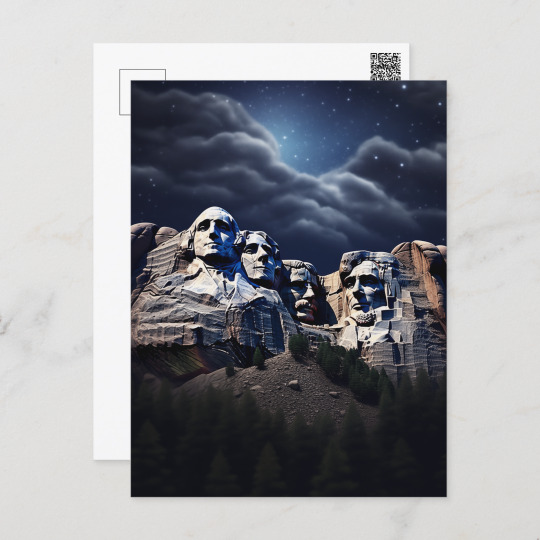


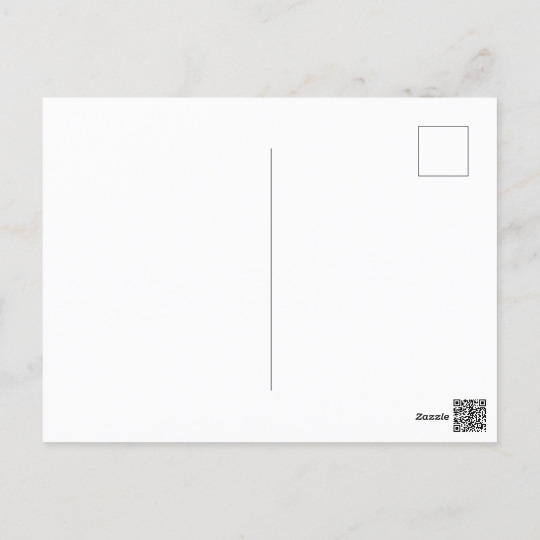
American Pride: Witnessing Mount Rushmore's Grandeur
#mount rushmore#american pride#Monumental faces#National treasure#Black Hills#Gutzon Borglum#Presidential sculptures
0 notes
Text
Controversial Public Art
I am not someone who believes art is just meant for museums or for hanging in your homes. Although those are amazing places for them, I feel art is meant to be experienced in aspects of our every day lives. Out in the world as we walk through it. So I am a huge advocate for public art.
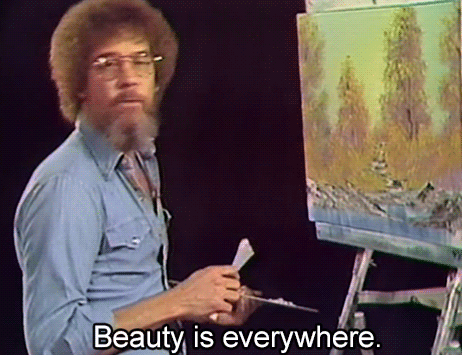
Very briefly that is defined as:
"Public Art is Artwork in the public realm, regardless of whether it is situated on public or private property, or whether it is acquired through public or private funding. Public art can be a sculpture, mural, manhole cover, paving pattern, lighting, seating, building facade, kiosk, gate, fountain, play equipment, engraving, carving, fresco, mobile, collage, mosaic, bas-relief, tapestry, photograph, drawing, or earthwork" -Jack Becker Monograph 2004
Public art is a way to beautify your spaces, express the unique aspects of your community and express the different culture and values of the people who live all around you. It can Commemorate events, people, or important groups that and their impacts to society. However, as with all art, you can't avoid controversy. Whether it be from who paid for the installation, to the subject matter. From proper representation, to where the piece is placed. What medium is used in its creation, or who the artist is. All of these things can lead to communities having a strong backlash to artistic pieces being displayed and some even turn to violent outbursts against the art or even their creators.
This is a list today I would like to discuss some controversial public art pieces. Maybe I will go more in depth about some of them later, but these are some big ones that stick in the public conscious today.
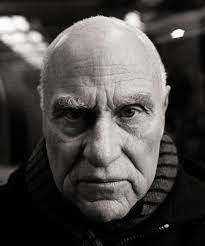
Richard Serra's Tilted Arc



This is a 12 foot tall, 120 foot long tiled steal plate that ran through Manhattan's federal plaza from 1981 to 1989. This wall forced people to take an inconvenient route through the plaza for most of the 80's. The goal of the piece was to inspire the viewer to become aware of themselves and their movement through the plaza, but it caused an imposition on government workers. The piece had a lot of support of modern artists,but by 1985 there was a hearing to remove the Arc and a court voted 4-1 to remove it. Due to the artists insistence that it never be displayed again it is now in government storage.

How Ya Like Me Now? by David Hammond


Painted in 1988 and commissioned by the Washington Project for the Arts for an exhibition on black culture and modernism this 14 foot by 16 foot billboard was poorly received to say the least. Local youths did not connect with the artists intended message of how popular culture was co-opting and commodifying black identity and whitewashing it. They interpreted it as racist so they tore the display down with sledgehammers. The piece was later reinstalled with the sledgehammers as part of the final piece incorporating the vandalism and backlash into the final work only this time it is inside the gallery and not on a street corner across from the National Portrait Gallery in D.C.

Just kidding , I couldn't find a good artist photo
Traffic Light Tree by Pierre Vivant
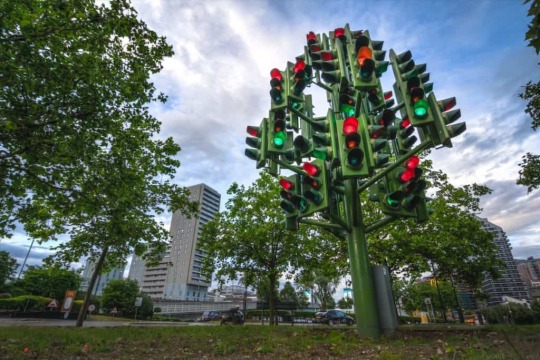
A sculpture originally located in Canary Wharf London in 1998 after a competition run by the Public Art Commissions Agency. It was moved to Billingsgate Market. It stands at 8 meters or 26.24 feet tall and has 75 sets of traffic lights. Vivant stated that it was to represent adjacent plane tree and the restless rhythm of the city. It was installed to replace a dying plane tree in the center of a roundabout, but the controversy arose when motorist confused the installation as an actual traffic light. Despite the initial controversy it has won over the city and is now viewed as one of the most pleasing roundabouts, although it still does cause confusion with tourists.

Martin Luther King Jr. Memorial by Lei Yixin


Built in 2011 this sculpture was controversial from start to finish. Recognized as a master sculptor in China and having sculpted monuments that included the communist leader Mao Zedong, his appointment to sculpt the Dr King statue was protested due to members of human rights organizations decrying the appointment of his visual support of the CCP. Others felt that the statue should have been done by an African American artist. They disliked the use of Chinese granite and not American granite. The quote engraved on the side was abridged in a way that changed the meaning and upset many, to the point where a year later it was removed to now only show abstract striations.

Tree by Paul McCarthy
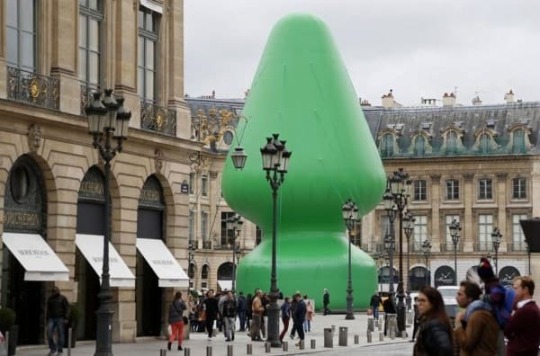
Displayed in October 2014 at the International Fair of Contemporary Art in Palace Vendôme in Paris this abstraction of a Tree in a reminiscent way of a modern impressionist was a 24 meter or 78.74 foot tall green canvas butt plug shape because he thought they looked similar to trees so he created it as a tree abstraction. He was actually assaulted by someone while installing it, and it was destroyed two days later because some people thought it was offensive to children.
Tree was displayed again in 2016 at Paramount Ranch 3 and it was well received by visitors.
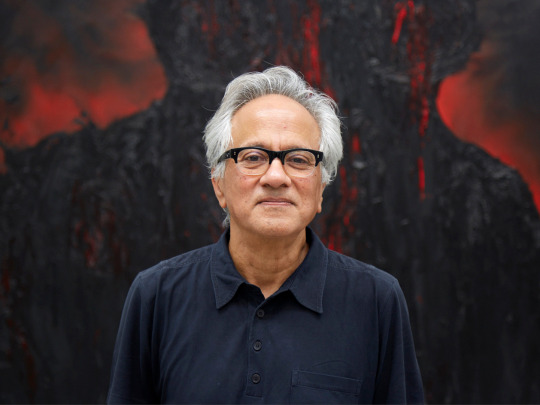
Dirty Corner by Anish Kapoor


I feel a list of modern controversial art wouldn't be complete without Anish Kapoor, but my feelings are not why he is on the list. It is because he is a controversial artist. All his controversies deserve a post of their own, so only one is on this list.
This art piece was created in 2011, but when it was brought to the Palace of Versailies in 2015 is when it hit its peak. The 60 meter (196.85ft) long and 8 meter(26.25ft) tall cone was described by Kapoor as "the vagina of a queen who was taking power". Critics hated the sexual nature and its nickname is "the Queen's Vagina."
The idea was to enter the cone shaped piece and loose your perception of space the deeper you went into it. People vandalized the piece with antisemitic slurs as Kapoor's mother is Jewish. After some legal fights and wanting to leave the vandalism as a statement to the horror and intolerance of humanity, he was ordered to cover or remove the vandalism. He chose to cover it with gold leaf as "a royal response" the piece is no longer on display in France.
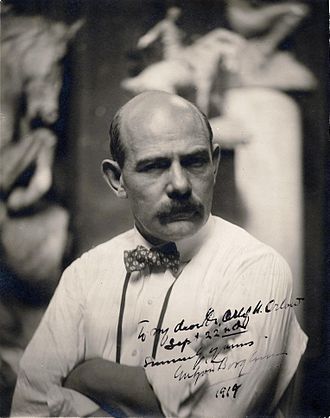
Mount Rushmore National Memorial by Gutzon Borglum


Sculpted from 1927 to 1941
This might be a controversial one to add for many Americans. But I wanted to focus on the 20th and 21st centuries and so I feel I would be remiss to not add this monument to America.
Carved in the Black Hills of South Dakota by a close friend of Teddy Roosevelt and known Klan associate. This monument to the greatness of American expansionism in the early 20th century is also a monument to how American presidents directly participated, through policy or active participation in the taking and desecration of Native American lands. The Black Hills are considered a Holy Site to the Lakota people, and in the Fort Laramine Treaty of 1868 it was considered exempt from white settlement forever. But gold was discovered so the treaty was violated. Where Mount Rushmore is located is also home to Custer State Park, named after an American general who actively participated in the violation of the Treaty. Mount Rushmore was meant to be a Monument to America's Greatness as embodied by our Presidents, but it at the same time is a symbol of our expansion, treaty violations, and exploitation of the land and people of this nation.
It remains a site of protest, the rock itself isn't great for carving and people think about adding more to it. The National Park service have dismissed the idea of altering it at all. People are divided about the site to this day. Some want it destroyed, some want to use it for education, but i have to say the National Park splash page doesn't help much with the education, and some just want the Lakota people to have their Holy Site back. The Lakota won a lawsuit for 17+million dollars, but they also just want the Land and not money as it is a holy site, and they continue to protest. The carving can not be undone, so the site remains a divisive reminder of American History that is often just a footnote in the education of most.
If you can think of any public artwork that you think is controversial please share it! Even if its just a public art work that someone has in their lawn that people in your community cant stand. Art should promote discussion, learning, and growth!
#art#public art#controversial#controversial art#anish kapoor#richard serra#david hammons#pierre vivant#paul mccarthy#lei yixin#gutzon borglum#art history#western art history
1 note
·
View note
Text
Exploring the Secrets of Mount Rushmore: A Historical Mystery
Mount Rushmore: The Intriguing Hidden Chamber
Within the realm of American history and conspiracy theories, there exists a tale that seems ripped from the pages of a Hollywood adventure script, reminiscent of blockbuster movies like “National Treasure.” Yet, the theory that something extraordinary lies concealed within the monumental edifice of Mount Rushmore predates its portrayal on the silver…

View On WordPress
#American history#Gutzon Borglum#Hidden secrets in monuments#Mount Rushmore conspiracy theories#Mount Rushmore history
1 note
·
View note
Text


— Monte Rushmore (1927 - 1941), por Gutzon Borglum y Lincoln Borglum.
— Barbie (2023), dirigida por Greta Gerwig.
#screenshot#2023#reference#barbie#barbieland#feminism#ken#margot robbie#movie#monte rushmore#gutzon borglum#lincoln borglum#abraham lincoln#george washington#thomas jefferson#keystone#usa#mount rushmore
1 note
·
View note
Text
Notable Leaders
We live on the information highway—information is everywhere, even on the back of Sunday’s bulletin! Whether we are still living in a Christian America is certainly up for debate, but no matter the final conclusion no one can erase our Christian heritage—especially this one:
Four massive sixty-foot heads rise majestically in granite in the Black Hills of South Dakota. The faces of George…
View On WordPress
#Christian America#Christian heritage#Christian principles#christianity#Gutzon Borglum#Independence Day#liberty#Mount Rushmore#presidents
0 notes
Text
Ren: Yusuke has a very strange patchwork of knowledge. It’s anybody’s guess as to what he knows about any given topic.
Futaba: Oh yeah?
Ren: Yeah. Watch this.
Ren, turning to Yusuke: Who sculpted Mount Rushmore?
Yusuke: Gutzon Borglum, but his son finished it. Why?
Ren: Okay, now what state is it in?
Yusuke: … Ecuador, perhaps?
116 notes
·
View notes
Text
Sayaka, whispering to Kyoko: Thanks to all of her failed timeloop plans, Homura has an absurd patchwork of knowledge. It's anyone's guess what she knows about any given topic. Watch this.
Sayaka, loudly: Hey Homura, who sculpted Mount Rushmore?
Homura: Gutzon Borglum, then his son finished it. Why?
Sayaka: And what state is it in?
Homura: I don't know, Ecuador or something! What's with all the questions?!
Kyoko, whispering: So there is a savant half...
#madoka magica#pmmm#puella magi madoka magica#submission#homura akemi#sayaka miki#kyoko sakura#source: dan vs#Kyoko's line is a reference to the 'idiot savant' trope in case that was a bit obtuse#lateleviathan
65 notes
·
View notes
Text
Weiss: Jaune has very patchwork knowledge.
Ruby: What do you mean?
Weiss: It's a toss up if he knows any given fact. Observe. Jaune. Who sculpted Mt. Rushmore?
Jaune: Gutzon Borglum. Then his son finished it.
Weiss: And what state is it in?
Jaune: I don't fucking know! Ecuador or something!
#rwby#rwby incorrect quotes#jaune arc#weiss schnee#ruby rose#lancaster#whiteknight#whiterose#white rose#white knight#war of roses
41 notes
·
View notes
Text
Katara: Sokka has a very strange patchwork of knowledge. It's anyone's guess as what he knows about any given topic. Watch.
Katara: Hey Sokka, who sculpted Mount Rushmore?
Sokka: Gutzon Borglum, then his son finished it. Why?
Katara: And what state is it in?
Sokka: I-I DON'T KNOW!!! Ecuador something...
#atla#katara#sokka#water siblings#water damage siblings#source: tik tok#incorrect quotes#atla incorrect quotes
101 notes
·
View notes
Text




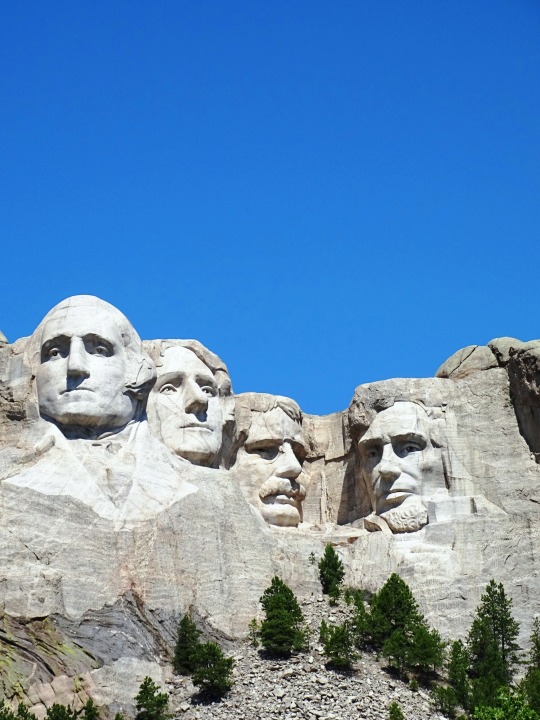







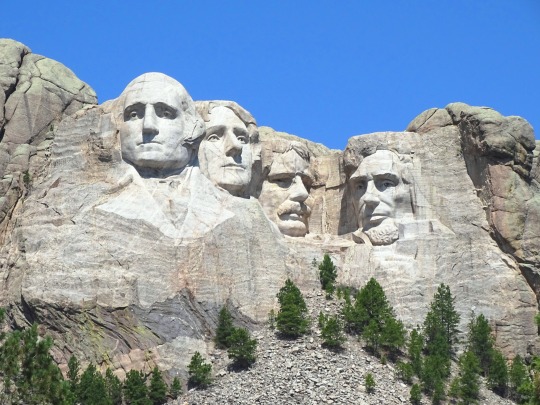
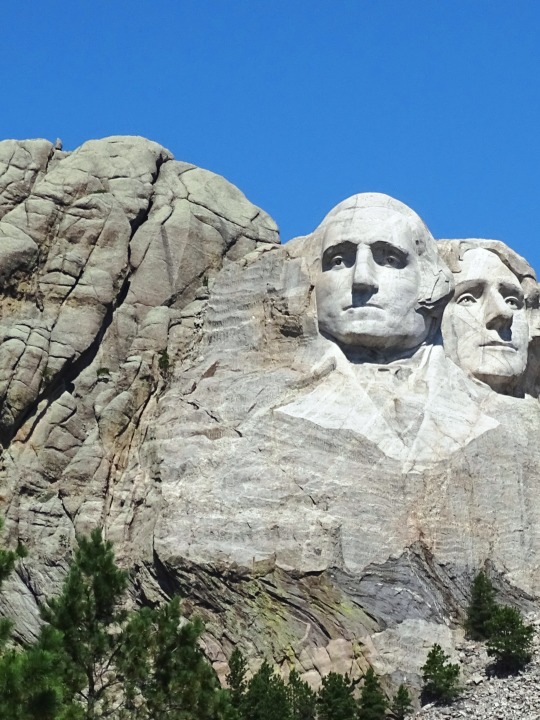
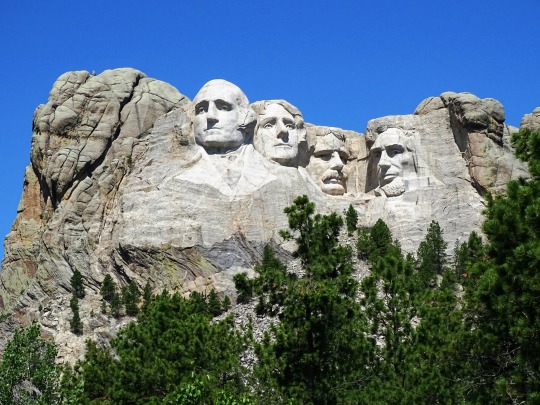
Thomas Jefferson Day
Thomas Jefferson, a founding father of the United States, was born on April 13, 1743. He held many roles and did much during the formative years of the country, including being the main author of the Declaration of Independence and the country’s third president. He wrote his own epitaph, highlighting what he most wanted to be remembered for: “HERE WAS BURIED THOMAS JEFFERSON AUTHOR OF THE DECLARATION OF AMERICAN INDEPENDENCE OF THE STATUTE OF VIRGINIA FOR RELIGIOUS FREEDOM AND FATHER OF THE UNIVERSITY OF VIRGINIA.”
Thomas Jefferson Day is a legal observance, but it is not a public holiday. A joint resolution approved on August 16, 1937, authorized the President of the United States to proclaim April 13 as “Thomas Jefferson’s Birthday” each year. The following year, President Franklin D. Roosevelt issued Presidential Proclamation 2276 to designate the day. Subsequent presidents have made similar proclamations. In Alabama, Thomas Jefferson’s birthday is officially celebrated on Presidents’ Day, along with George Washington’s.
Thomas Jefferson was born at the Shadwell plantation in Albemarle County, Virginia. His mother, Jane Randolph Jefferson, was from a prominent Virginia family, and his father, Peter Jefferson, was a planter and surveyor. After graduating from the College of William and Mary in 1762, he began studying law. As there weren’t official law schools at the time, Jefferson studied under a Virginia attorney. He began his work as a lawyer in 1767.
He married Martha Wayles Skelton on January 1, 1772. They had six children, but only two daughters lived to adulthood. Martha died in 1782 at the age of 33, and Jefferson never remarried. Besides keeping himself busy with politics throughout his life, he had many other interests, including gardening, architecture, music, and reading.
Jefferson was a member of colonial Virginia’s House of Burgesses between 1769 and 1775. He wrote “A Summary View of the Rights of British America” in 1774, which brought him to a wider audience. It said that the British Parliament didn’t have the right to use authority over the colonies. He was then selected to be a delegate to the Second Continental Congress. During this time, a panel of five was chosen to draft the Declaration of Independence. Of the five, which also included John Adams and Benjamin Franklin, Jefferson was chosen to write the draft. It was adopted on July 4, 1776.
In the fall of 1776, Jefferson resigned from the Continental Congress and was elected to the Virginia House of Delegates, which was formerly the House of Burgesses. In the late 1770s, he drafted the Virginia Statute for Religious Freedom. It was a notable forerunner to the First Amendment, and Jefferson thought it was one of his most substantial contributions, being important enough to include in his epitaph. After his time in the Virginia House of Delegates, he was Governor of Virginia from 1779 to 1781.
Following the Revolutionary War, Jefferson was part of Congress, which was known as the Congress of the Confederation at the time. He served from 1783 to 1784, and then became Minister to France in 1785, taking over the position that Benjamin Franklin had held. Because he was overseas, he was not able to attend the Constitutional Convention in 1787.
In the fall of 1789, Thomas Jefferson returned to America and became the first secretary of state. He helped found the Democratic-Republican Party, which opposed Alexander Hamilton’s Federalist Party, a party which wanted a strong central government with strong powers over the economy. Jefferson believed in a federal government with a limited role and believed in strong state and local governments.
He ran for president in 1796 and received the largest amount of votes after John Adams, so he became vice president. He ran against Adams again in 1800, and this time beat him. But his electoral vote count tied that of his running mate, Aaron Burr, and it was up to the House of Representatives to declare Jefferson as president. Because of this, the Twelfth Amendment, which stipulated separate voting for president and vice president, was ratified in 1804.
Jefferson served two terms as president and was in office from 1801 to 1809. During his first term, in 1803, he helped orchestrate the Louisiana Purchase, in which the size of the United States doubled with the purchase of land for $15 million from France. Jefferson sent Meriwether Lewis and William Clark on an expedition, known as the Corps of Discovery, to explore the new land. With this trip, information was gathered about geography, plant and animal life, and American Indian tribes. During his second term, which he secured with over 70% of the popular vote, Jefferson worked to keep the country out of the Napoleonic Wars. He implemented the Embargo of 1807 after merchant ships were getting harassed by France and Britain. It was an unpopular move, though, as it shut down American trade and hurt the economy; it was repealed in 1809. Jefferson did not run for a third term in 1808.
After his presidency, Jefferson retired to his home, Monticello. “Monticello” means “little mountain” in Italian. Indeed the home is located on a small mountain, on the edge of the Shadwell property where Jefferson was born. He had begun clearing the area for a home in 1768. He designed the home and gardens himself, and he continually worked on the house throughout his life. Art and gadgets filled the rooms, and he kept records of everything that went on at the plantation.
During his retirement years, he also helped found the University of Virginia. He helped design both its buildings and its curriculum. He also made sure it wasn’t a religious school and that there wasn’t a religious litmus test in order to attend it.
In 1815, he sold his 6,700 volume personal library to Congress, to replace the books that had been destroyed by the British in the War of 1812, when they burned the Capitol, which housed the Library of Congress at the time. Jefferson’s books became the foundation of what became the Library of Congress’s new library.
Although Jefferson is revered as one of the founding fathers, he is not a man without contradictions and shortcomings. He was a promoter of liberty and wrote “all men are created equal,” but was a slave owner throughout his whole life, during which he owned a total of about 600 slaves. He believed blacks were inferior humans and didn’t think coexistence would be possible if they were free. And although he never remarried after the loss of his beloved wife, Martha, he went on to father more children with one of his slaves, Sally Hemings. Some of the slaves that were in his bloodline were freed after his death, but most of his slaves were sold.
Thomas Jefferson passed away at Monticello at the age of 83, on July 4, 1826, on the 50th anniversary of the adoption of the Declaration of Independence. As if the date of his death wasn’t ironic enough, fellow founding father John Adams died on the same day. Thomas Jefferson died first, but Adams did not know that Jefferson had died, and his last words were “Thomas Jefferson survives.” Jefferson was buried at Monticello. Monticello was sold off following his death to pay debts, but a nonprofit organization acquired it in the twentieth century and it was opened to the public in 1954.
Source
#Thomas Jefferson Day#13 April 1743#anniversary#US history#born#birthday#Mount Rushmore National Memorial#controversial memorial#USA#controversy#Black Hills#South Dakota#Gutzon Borglum#summer 2019#original photography#tourist attraction#landmark#landscape#nature#NationalThomasJeffersonDay#Thomas Jefferson#US President#Teddy Roosevelt#Theodore Roosevelt#Abraham Lincoln#George Washington#North Central Region#Great Plains#travel#vacation
6 notes
·
View notes
Text
Calli: Goomba has a very strange patchwork of knowledge. It's anybody's guess as to what she knows about ANY given topic. Watch. Hey, Goob, who sculpted Mount Rushmore?
Gura: Gutzon Borglum, then his son finished it.
Calli: Now, what state is it in?
Gura: I dunno, Ecuador or something?
#submission#mori calliope#gawr gura#holomyth#holoen#hololive#vtubers#incorrect quotes#source: dan vs#thank you for the submission!
26 notes
·
View notes
Text
Blue: Ink has a very strange patchwork of knowledge, it's anybodies guess to what they know about any given topic
Blue: Watch
Blue: Hey Ink. Who sculpted Mt. Rushmore?
Ink: Gutzon Borglum, then his son finished it, why?
Blue: And which state is it in?
Ink: How would I know? Equador or something?
145 notes
·
View notes
Text
Vegeta: Can't we just drop Kakarot off some place and tell him it's Mount Rushmore?
Bulma: I doubt that will work. Goku has a strange patchwork of knowledge. It's anyone's guess as to what he knows. Watch. Hey, Goku, who made Mount Rushmore?
Goku: Gutzon Borglum, and his son finished it. Why do you ask?
Bulma: Which state is it in?
Goku: I don't know. Nevada?
#s: dan vs#goku's mind is something else#incorrect quotes#incorrect dragon ball z quotes#incorrect dragon ball quotes#dragon ball z#dragon ball super#dbs#dbz#son goku#goku#vegeta#bulma#bulma briefs
123 notes
·
View notes
